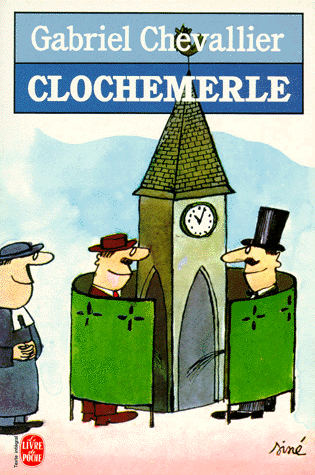
The opposition between the sexual politics (“biopolitics” in Foucaultian terms) of religious fundamentalism (whose extreme cases are ISIS and Boko Haram) and the radicalism of LGBT+ forms an axis of excesses from which one should distinguish another axis [axis-y], the one of the opposition between the two “normal” (and much more predominant) stances, the “normal” conservative family ideology which is ready to deplore the extremist excesses [the red curve], and the “normal” stance of liberal permissiveness which supports feminism and gay rights but prefers to mockingly dismiss the excesses of LGBT+ [the blue curve].
The basic axis is this one [y]. And each of its two opposed poles [the closer peaks to y-axis of both red and blue curves] tends to dismiss its radicalized version (Muslim-style extreme subordination of women is rejected by moderate-conservative Muslims; the excessive measures advocated by LGBT+ are also rejected by the mainstream advocates of women’s rights and of gay rights). Each side rejects such extremes as its own pathological outgrowth, as something belonging to those who have lost the proper human measure.

(Teacher of Teachers)
Failed Interpellation
The underlying structure is here that of a failed interpellation. In the case of interpellation, Althusser’s own example contains more than his own theorization gets out of it. Althusser evokes an individual who, while carelessly walking down the street, is suddenly addressed by a policeman: »Hey, you there!« By answering the call – that is, by stopping and turning round towards the policeman – the individual recognizes-constitutes himself as the subject of Power, of the big Other-Subject: ideology

” ‘transforms’ the individuals into subjects (it transforms them all) by that very precise operation which I have called interpellation or hailing, and which can be imagined along the lines of the most commonplace everyday police (or other) hailing: ‘Hey, you there!’
Assuming that the theoretical scene I have imagined takes place in the street, the hailed individual will turn round. By this mere one-hundred-and-eighty-degree physical conversion, he becomes a subject. Why? Because he has recognized that the hail was ‘really’ addressed to him, and that ‘it was really him who was hailed’ (and not someone else). Experience shows that the practical transmission of hailings is such that they hardly ever miss their man: verbal call or whistle, the one hailed always recognizes that it is really him who is being hailed. And yet it is a strange phenomenon, and one which cannot be explained solely by ‘guilt feelings,’ despite the large numbers who ‘have something on their consciences.’
Naturally for the convenience and clarity of my little theoretical theatre I have had to present things in the form of a sequence, with a before and an after, and thus in the form of a temporal succession. There are individuals walking along. Somewhere (usually behind them) the hail rings out: ‘Hey, you there!’ One individual (nine times out of ten it is the right one) turns round, believing/suspecting/knowing that it is for him, i.e. recognizing that ‘it really is he’ who is meant by the hailing. But in reality these things happen without any succession. The existence of ideology and the hailing or interpellation of individuals as subjects are one and the same thing.”
Kafka’s Trial in Hackney on 10 Mart 2013.
(https://www.hackneycitizen.co.uk/2013/03/10/the-trial-kafka-shoreditch-town-hall-rose-lipman-building/)
The first thing that strikes the eye in this passage is Althusser’s implicit reference to Lacan’s thesis on a letter that »always arrives at its destination«: the interpellative letter cannot miss its addressee since, on account of its »timeless« character, it is only the addressee’s recognition/acceptance that constitutes it as a letter.5 The crucial feature of the quoted passage, however, is the double denial at work in it: the denial of the explanation of interpellative recognition by means of a »guilt feeling,« as well as the denial of the temporality of the process of interpellation (strictly speaking, individuals do not »become« subjects, they »always-already« are subjects). This double denial is to be read as a Freudian denial: what the »timeless« character of interpellation renders invisible is a kind of atemporal sequentiality that is far more complex than the »theoretical theatre« staged by Althusser on behalf of the suspicious alibi of »convenience and clarity.« This »repressed« sequence concerns a »guilt feeling« of a purely formal, »non-pathological« (in the Kantian sense) nature, a guilt which, for that very reason, weighs most heavily upon those individuals who »have nothing on their consciences.« That is to say, in what, precisely, consists the individual’s first reaction to the policeman’s »Hey, you there!«? In an inconsistent mixture of two elements: (1) why me, what does the policeman want from me? I’m innocent, I was just minding my own business and strolling around…; however, this perplexed protestation of innocence is always accompanied by (2) an indeterminate Kafkaesque feeling of »abstract« guilt, a feeling that, in the eyes of Power, I am a priori terribly guilty of something, although it is not possible for me to know what precisely I am guilty of, and for that reason – since I don’t know what I am guilty of – I am even more guilty; or, more pointedly, it is in this very ignorance of mine that my true guilt consists.
What we have here is thus the entire Lacanian structure of the subject split between innocence and abstract, indeterminate guilt, confronted with a non-transparent call emanating from the Other (»Hey, you there!«) , a call where it is not clear to the subject what the Other actually wants from him (»Che vuoi?«). In short, what we encounter here is interpellation prior to identification. Prior to the recognition in the call of the Other by means of which the individual constitutes himself as »always-already«-subject, we are obliged to acknowledge this »timeless« instant of the impasse in which innocence coincides with indeterminate guilt: the ideological identification by means of which I assume a symbolic mandate and recognize myself as the subject of Power takes place only as an answer to this impasse. So what remains »unthought« in Althusser’s theory of interpellation is the fact that prior to ideological recognition we have an intermediate moment of obscene, impenetrable interpellation without identification, a kind of vanishing mediator that has to become invisible if the subject is to achieve symbolic identity, i.e., to accomplish the gesture of subjectivization. In short, the »unthought« of Althusser is that there is already an uncanny subject that precedes the gesture of subjectivization. And the same goes for sexual interpellation: my identification as »man« or »woman« is always a secondary reaction to the »castrative« anxiety of what I am.
This is why the obvious solution of drawing a line of distinction between the legal aspect and the psychological turmoil of being transgender is all too easy. The problem with this claim (ending the segregation in toilets (and similar measures) are just external legal measures which should be adopted on behalf of social justice but which in no way aim to cancel the psychic turmoil and anxiety of being transgender) is that one precisely cannot draw such a line since (as we all for sure learned already from Kafka) the legal domain is inherently a domain of intense libidinal investments, of anxieties, perverse satisfactions, etc. Having a toilet »room of one’s own« can easily turn into an even stronger segregation than having no room of one’s own, and imposing a neutral toilet for all will continue to function as a denial of basic antagonisms.
In Lacan’s precise sense of the term, the third element (the Kierkegaardian chimney sweeper) effectively stands for the phallic element – how? Insofar as he stands for pure difference: officer, maid and chimney sweeper are the masculine, the feminine, plus their difference as such, as a particular contingent object – again, why? Because not only is difference differential, but, in an antagonistic (non)relationship, it precedes the terms it differentiates: not only is woman not-man and vice versa, but woman is what prevents man to be fully man and vice versa. It is like the difference between the Left and the Right in the political space: their difference is the difference in the very way difference is perceived: the whole political space appears differently structured if we look at it from the Left or from the Right, there is no third “objective” way (for a Leftist, the political divide cuts across the entire social body, while for a Rightist, society is a hierarchic Whole disturbed by marginal intruders). Difference “in itself” is thus not symbolic/differential, but real-impossible – something that eludes and resists the symbolic grasp. This difference is the universal as such – universal not as a neutral frame elevated above its two species, but as their constitutive antagonism, and the third element (chimney sweeper, Jew, object a) stands for the difference as such, for the “pure” difference/antagonism which precedes the differentiated terms. If the division of the social body into two classes would have been complete, without the excessive element (Jew, rabble…), there would have been no class struggle, just two clearly divided classes – this third element is not the mark of an empirical remainder that escapes the class classification (the pure division of society into two classes), but the materialization of their antagonistic difference itself, insofar as this difference precedes the differentiated terms. In the space of anti-Semitism, the “Jew” stands for the social antagonism as such: without the Jewish intruder, the two classes would live in harmony… We can see now how the third intruding element is evental: it is not just another positive entity, it stands for what is forever unsettling the harmony of the Two, opening it up to an incessant process of re-accommodation. – Another example of this third element, objet a which supplements the couple, comes, from Iran and also again, from Turkey – In 2016 summer news about Iranian men wearing headscarfs for solidarity with their women protesting the islamic veiling enforced by law had been propagated in Western media. News pictures showed veiled men next to open head women, obeying the law through inverting (or violating) the sexist nature of the law: women had opened their heads “in lieu of” their men, while men had been covered for women… In the spring of 2008, ostensibly an opposite version of this event happened in Boğaziçi University in Istanbul too, when a group of male students had worn headscarfs to participate into a demonstation of veiled female students to show their “solidarity” in protesting the law prohibiting religious dressing and using religious symbols in public areas and state institutions. Both in Iran and in Turkey the predicate was, of course, the well known liberal argument that state shouldn’t intervene people’s own choices of clothing. In both cases, however, these inclusions of (religiously) “cross-dressed” men into women’s struggle induced some kind of disturbance in Islamist circles – why?
The implicit coerced imposition of islamic dress code (the islamic “biopolitics”, in Foucaultian term) doesn’t imagine for such a diversion to exist: would men wearing headscarfs be prosecuted (in Iran)? or could veiled-men defend women’s – the so called – sincere, apolitical, private personal right to choose their clothing in line with their beliefs (in Boğaziçi University)? The common trick of both acts was to confront the (Boko-Haram-Öğüt) logic (which reposes on the “authenticity” of womenhood as an attribute to religiously determinate sexual roles) to a semantic void, a disturbing Real subverting the rules of semiotics: For Lacan, phallus (which defines masculinity) is not his possession of penis but the way he relates to some external phallic signifier (defending his and the other’s right to – not to – dress the headscarf), which means precisely an external supplement – the headscarf, in this situation. What we have here is again a double negation into function: their appropriation of this supplement (that is, veiling the headscarf as imposed as the signifier of womenhood) is still (and even more) a “masculin” diversion showing the “nakedness” of the islamic “masculin” authority. So the veiled-male protestors should have first been emasculated (in its primary etymological sense of ‘making masculine’) by their recognition that they were not “authentic females” but covered-males, so that then they could had been ‘emasculated’ (either prosecuted in Iran or to be removed from women’s demonstration in Boğaziçi University)(5)
The obvious reading would have been a Butlerian one: through their provocative trans-sexual appearance and acting, these veiled-males rendered visible the contingent character of sexual difference, of how it is symbolically constructed – as such, they were a threat to normatively established sexual identities… My reading is slightly (or not so slightly) different: rather than undermining sexual difference, they stood for this difference as such, in islamist mind’s / mentality’s traumatic Real, irreducible to any clear symbolic opposition; their disturbing appearance transforms clear symbolic difference into the impossible-Real of an antagonism. So, again, in the same way as class struggle is not just “complicated” when other classes that do not enter the clear division of the ruling class and the oppressed class appear (this excess is, on the contrary, the very element which makes the class antagonism real and not just a symbolic opposition), the formula of sexual antagonism is not M/F (the clear opposition between masculine and feminine) but MF+, where + stands for the excessive element which transforms the symbolic opposition into the real of an antagonism.
This brings us back to our topic, the big opposition that is emerging today: on the one hand, the violent imposition of a fixed symbolic form of Sexual Difference as the basic gesture of counteracting social disintegration; on the other hand, the total transgender “fluidification” of gender, the dispersal of sexual difference into multiple configurations. This opposition is false: both poles share a key feature, they both miss sexual difference as the real/impossible of an antagonism.
What goes on is also the neglect of the class and race dimension by the PC proponents of women’s and gay rights. “In ‘10 Hours of Walking in NYC as a Woman’ created by a video marketing company in 2014, an actress dressed in jeans, black t-shirt, and tennis shoes walked through various Manhattan neighborhoods recording the actions and comments of men she encountered with a hidden camera and microphone. Throughout the walk the camera recorded over 100 instances coded as verbal harassment, ranging from friendly greetings to sexualized remarks about her body including threats of rape. While the video was hailed as a document of street harassment and the fear of violence that are a daily part of women’s lives, it ignored race and class: the largest proportion of the men presented in the video are minorities: in a number of instances the men commenting at the actress were standing against buildings, resting on fire hydrants, or sitting on folding chairs on the sidewalk, postures used to characterize lower class and unemployed men – or, as reader commented on it: ‘The video was meant to generate outrage… and it used cryptoracism to do it.’”
The great mistake in dealing with this opposition is to search for a proper measure between the two extremes – what one should do instead is to bring out what both extremes share: a peaceful world where the agonistic tension of sexual difference disappears, either in a clear and stable hierarchic distinction of sexes or in the happy fluidity of desexualized universe. And it is not difficult to discern in this fantasy of a peaceful world the fantasy of a society without social antagonisms, in short: without class struggle.
Universal Antagonism
To conclude, transgender people are not simply marginals who disturb the hegemonic heterosexual gender norm; their message is universal, it concerns us all, they bring out the anxiety that underlies every sexual identification, its constructed/unstable character. This, of course, does not entail a cheap generalization which would cut the edge of the suffering of transgender people (»we all have anxieties and suffer in some way«) – it is in transgender people that anxiety and antagonism which otherwise remain mostly latent break open. So in the same way in which for Marx, if one wants to understand the »normal« functioning of capitalism, one should take as a starting point economic crises, if one wants to analyze »normal« heterosexuality, one should begin with the anxieties that explode in transgender people.
So what are transgender individuals from the clinical standpoint? They are not a clinical category – certainly no more “pathological” than the majority of “normal” people. Millot was right emphasizing that each case should be approached in its uniqueness, focusing on the specific subjective economy which brought the subject to formulate a demand for gender change, an uneasiness with the socially allotted gender identity, etc. Transgender subjects can perform the fetishist disavowal of castration (when their identity functions as a fetish), they can be caught in hysterical questioning, etc., so one should avoid fast generalizations and bear in mind that real castration (like the one performed by the ancient Bulgarian sect of skopci) is the ultimate form of the disavowal of castration. Those who follow Butler in emphasizing the infinite plasticity of the discursive construction of gender (“choose your sex”) ignore the real, not the biological real supposed to pose a limit to discursive transformations but the real of sexual antagonism.
This is why antagonism is not between heterosexuality and LGBT; antagonism (or again, as Lacan put it, the fact that »there is no sexual relationship«) is at work in the very core of normative heterosexuality, it is what the violent imposition of gender norms endeavors to contagion and obfuscate. It is here that my parallel with the anti-Semitic figure of the Jew enters: the (anti-Semitic figure of the) »Jew« as the threat to the organic order of a society, as the element which brings into it from the outside corruption and decay, is a fetish whose function is to mask the fact that antagonism does not come from the outside but is immanent to every class society.
One – traditional – way to avoid this anxiety is to impose a heterosexual norm which specifies the role of each gender, and the other is, as we have already seen, to advocate the overcoming of sexuality as such (the postgender position). Today, with the rise of the “Internet of Things” (IoT) and biogenetics, this perspective got a new boost. And, as part this new perspectives, new demands for overcoming old limitations will emerge; among them there will be demands for legalizing multiple marriages (which already existed, not only as polygamy but also as polyandry, especially in the Himalaya region), as well as demands for some kind of legalization of intense emotional ties with animals (legally described “emotional support animals” are already a huge thing in the US). I am not talking about sex with animals (although I remember from my youth, from the time of late 1960s, the widespread tendency all around Europe to practice sex with animals), even less about “bestiality,” but about a tendency to recognize some animals (say, a faithful dog) as legitimate partners.
And this brings us back to the topic of normativity: the predominant stance of today’s consumerist-capitalist ethics is effectively beyond normativity, “beyond good and evil,” but there is nothing even vaguely “progressive” about it, this “beyond” should rather be read as “beneath.” Normativity cannot and should not be reduced to the scarecrow of “normative impositions of hegemonic ideology” – is the fact that, at least in our public space, homophobia and tolerance for rape are inadmissible, not cases of normativity which should be endorsed without qualification? The normativity we should fight for should be different from hegemonic heterosexual/conservative one as well as from the Politically Correct fake.
Nancy Fraser has shown how the predominant form of the US feminism was basically co-opted by neoliberal politics, while the exploding animosity of the Third World countries towards gay struggles is widely known, the saddest thing about them being that they present their rejection of homosexuality etc. as part of their anti-imperialist struggle. So in the same way that homophobia and anti-feminism in many Third World movements should make us suspicious about the level of their anti-imperialism, we should also at least take note of the fact that individuals who personify the cutting edge of global capitalism, like Tim Cook, emphatically support LGBT+ rights. There is nothing a priori bad in this fact, of course – there is a long history of big corporations acting against apartheid. In the old South Africa, foreign companies with factories there (like Mercedes) began paying black workers the same as white and thus definitely contributed to the end of apartheid. It is nonetheless symptomatic to listen to stories of how LGBT individuals are oppressed, victimized, etc. – true, but one should nonetheless also note that they enjoy full support of the hegemonic political space and big business. This, of course, should not in any way problematize our full support for LGBT+, but it should make us aware of politico-ideological background of the affair.
Whenever one mentions class struggle, multicultural theorists tend to explode with warnings against “class essentialism,” against the reduction of anti-racist and anti-sexist struggles to a secondary phenomenon; however, a quick look at their work shows that (with some rare exceptions) they de facto simply ignore class struggle. Although they officially promote the mantra of “sex-race-class,” the class dimension is never actually dealt with. Class struggle is de facto prohibited in multiculturalist discourse, but this prohibition is itself prohibited, one cannot enounce it openly – the penalty is the instant accusation of “class essentialism.” This is why those critics of my texts on LGBT+ who accused me of old-style class essentialism which ignores new forms of cultural struggles totally miss the point: my problem is precisely how to effectively bring together the anti-capitalist struggle with anti-sexist etc. struggles. The problem is not one of communication, of a deeper understanding of the other, but one of radical self-transformation: each side will have to undergo such a radical change that the problem is not resolved but simply disappears.
Maybe, the problem is much more serious than it appears – maybe, the desperate calls for the unification of struggles bear witness to the fact that today’s predominant form of anti-sexist struggle in developed Western countries is to such an extent constrained by the ideological coordinates of highly developed late capitalist society that their direct unification is simply impossible. Maybe, the phrase “class struggle and anti-sexist struggle” conceals a hidden “castrative” dimension, a dimension of – not a VEL but – an “exclusive OR” of a hard choice: one OR the other, never both of them. In spite of all rhetoric of solidarity, today’s actual “nomadic proletariat” (immigrants from non-Western countries, ((((( this new form of what Frantz Fanon called “the wretched of the Earth” ))))) ) and today’s actual anti-sexist movements cannot find the same language. Once again, to construct a shared space for both of them is a difficult task that requires long and hard work of self-transformation from both sides. ((((( To put it in brutal terms, without this shared space, one cannot get rid of the suspicion that the Politically Correct cultural Left is getting so fanatical in advocating “progress,” in fighting new and new battles against cultural and sexist “apartheids,” to cover up its own full immersion into global capitalism. Their shared space is the space in which LGBT+ meets Tim Cook.
No wonder that this process of the progressive radicalization of the liberal demands for the overcoming of the different forms of “segregation” recently found its peak in the demand for the desegregation of toilets – there is a long history behind this demand. Already in 2012, Viggo Hansen, a Leftist MP, deposed in the Swedish parliament the project of a law which prohibits masculine individuals to urinate in standing in order to end the urinary segregation and enforce the same model of urination for all. But we should reach even further back: in 1934, Gabriel Chevalier published Clochemerle, a novel set in a fictional French village situated in the (Beaujolais region. The book satirizes the conflicts between Catholics and Republicans in the French Third Republic by telling the story of the installation of a urinal in Clochemerle’s village square. The “Leftist radical” mayor and principal teacher concoct the idea of a public urinal as a big symbol of Republican egalitarianism which will bring secular Enlightenment into the village and thereby deal a heavy blow to the Catholic reactionaries…
It is difficult to miss the ironic reference to Duchamp’s urinal (first presented in 1917), this ultimate example of radical artistic egalitarianism (any object can be an object of art if it is displayed as such. Furthermore, we should bear in mind the ultimate arbitrariness of the choice of the activity which is considered worthy to be liberated or desegregated. Say, why is smoking more and more prohibited while the use of drugs is more and more considered an unalienable right?
Another example: decades ago, the French “progressive” press published a whole series of petitions demanding the decriminalization of pedophilia, claiming that in this way the artificial and oppressive culturally-constricted frontier that separates children from adults will be abolished and the right to freely dispose with one’s body will be extended also to children, so only dark forces of “reaction” and oppression can oppose this measure – among the signatories were Sartre, de Beauvoir, Derrida, Barthes, Foucault, Aragon, Guattari, Deleuze, Dolto, Lyotard… Today, however, pedophilia is perceived as one of the worst crime and, instead of fighting for it in the name of anti-Catholic progress, it is rather associated with the dark side of the Catholic church, so that fighting against pedophilia is today a progressive task directed at the forces of reaction… The comic victim of this shift was Daniel Cohn-Bendit, still living in the old spirit of the 60s, recently described in an interview how, while, in his young years, he worked in a kindegarten, he regularly played masturbatory games with young girls; to his surprise, he faced a brutal backlash, demanding his removal from the European parliament and prosecution.
At a more general methodological level, one cannot distinguish in a direct way the universal dimension of the emancipatory project and the identity of a particular way of life, so that while we are all together engaged in a universal struggle, we simultaneously fully respect the right of each group to its particular way of life. One should never forget that, for a subject who lives a particular way of life, all universals appear to him “colored” by this way of life. Each identity (way of life) comprises also a specific way to relate to OTHER ways of life. So when we posit as a guideline that each group should be left to enact its particular identity, to practice its own way of life, the problem immediately arises: where do customs that form my identity stop and where does injustice begin? Are woman’s rights just our custom, or is the struggle for women’s rights also universal (and part of the emancipatory struggle, as it was in the entire Socialist tradition from Engels to Mao)? Is homophobia just a thing of particular culture to be tolerated as a component of its identity? Should arranged marriages (which form the very core of the kinship structures of some societies) also be accepted as part of a particular identity? Etc.
This »mediation« of the universal with the particular (way of life) holds for all cultures, ours (Western) included, of course. The »universal« principles advocated by the West are also colored by the Western way of life, plus we should never forget the rise of the religious-nationalist fundamentalism in countries like Poland, Hungary and Croatia. In the last decades, Poland was one of the few European definitive success stories: after the fall of Socialism, the per capita product more than doubled, and for the last couple of years, the moderate liberal-centrist government of Donald Tusk ruled – and then, almost out of nowhere, without any great corruption scandals as in Hungary, the extreme Right took over, and there is now a widespread movement to prohibit abortion even in the limit-cases of the mortal danger for mother’s health, rape, and deformity of the fetus. A whole series of problems emerge here: what if equality among humans is in tension with equality among cultures (insofar as some cultures neglect equality)?
So the task is thus to bring the struggle INTO every particular way of life: each particular »way of life« is antagonistic, full of inner tensions and inconsistencies, and the only way to proceed is to work for an alliance of struggles in different cultures. From here I would like to return to your the project of the alliance between progressive middle classes and nomad proletarians: in terms of concrete problematic, this means that the politico-economic struggle against global capitalism and the struggle for women’s rights etc. have to be conceived as two moments of the same emancipatory struggle for equality.
The transgender theorists who endeavor to assert the link between their struggle and the struggle against racist get caught in the line of argumentation which reaches its peak in Che Gossett’sthe claim that »trans and gender nonconforming people are situated (like the violence of the gender binary which we oppose) within the theoretical and political coordinates of history and history’s present tense — the afterlife of slavery and colonialism. Žižek ignores the fact that we can’t think the gender binary outside of the context of racial slavery and colonialism within which it was forged.« So it’s not just that racism and colonialism mobilize and manipulate – the gender binary emerged in the context of racial slavery… So what about the blatant fact that all premodern cosmologies are based precisely on »gender binary,« on the interaction of masculine and feminine »cosmic principles«? (Not to mention the usual confusion between sexual difference/antagonism and »gender binary«.)
These two aspects – the imposition of Western values as universal human rights, and the respect for different cultures independently of the horrors that can be part of these cultures – are the two sides of the same ideological mystification. So are universal human rights universal? Or do they give preference to Western cultural values? Perhaps. A lot has been written about how the universality of universal human rights is twisted, how they secretly give preference to Western cultural values and norms (the priority of individual over his/her community, and so on). It could also be argued that the But we should also add to this insight that the mMulticulturalist anti-colonialist defence of the multiplicity of ways of life is also false: it covers up the antagonisms within each of these particular ways of life, justifying acts of brutality, sexism and racism as expressions of a particular culture that we have no right to judge by foreign Western values.
This aspect should in no way be dismissed as marginal: from Boko Haram and Mugabe to Putin, anti-colonialist critique of the West more and more appears as the rejection of the Western »sexual« confusion, and as the demand for returning to the traditional sexual hierarchy. It is, of course, true that the immediate export of Western feminism and individual human rights can serve as a tool of ideological and economic neocolonialism (we all remember how some American feminists supported the US intervention in Iraq as a way to liberate women there, while the result is exactly the opposite). But one should nonetheless absolutely reject to draw from this the conclusion that Western Leftists should make here a »strategic compromise,« silently tolerating »customs« of humiliating women and gays on behalf of the »greater« anti-imperialist struggle.
However, the opposition between the sexual politics of religious fundamentalism (whose extreme cases are ISIS and Boko Haram) and the radicalism of LGBT+ forms an axis of excesses from which one should distinguish another axis [axis-y], the one of the opposition between the two “normal” (and much more predominant) stances, the “normal” conservative family ideology which is ready to deplore the extremist excesses [the red curve], and the “normal” stance of liberal permissiveness which supports feminism and gay rights but prefers to mockingly dismiss the excesses of LGBT+ [the blue curve].

The basic axis is this one [y], and each of its two opposed poles [the closer peaks to y-axis of both red and blue curves] tends to dismiss its radicalized version (Muslim-style extreme subordination of women is rejected by moderate-conservative Muslims; the excessive measures advocated by LGBT+ are also rejected by the mainstream advocates of women’s rights and of gay rights). Each side rejects such extremes as its own pathological outgrowth, as something belonging to those who have lost the proper human measure.
Communist struggle for the universal emancipation means a struggle which cuts into each particular identity, dividing it from within. When there is racism, when there is domination over women, it is always an integral part of a particular “way of life,” a barbarian integral underside of a particular culture. In the “developed” Western world, Communist struggle means a brutal and principled struggle against all ideological formations which, even if they present themselves as “progressive,” serve as an obstacle to universal emancipation (liberal feminism, etc.); it means not only attacking our own racist and religious fundamentalisms, but also demonstrating how they ariseouse out of the inconsistencies of the predominant liberalism. And in Muslim countries, Communist strategy should in no way endorse their traditional “way of life” which includes honor killings, etc.; it should not only collaborate with the forces in these countries which fight traditional patriarchy, it should make a crucial step forward and demonstrate how, far from serving as a point of resistance against global capitalism, such traditional ideology is a direct tool of imperialist neocolonialism.
-End.-
Footnotes:
1) Louis Althusser, ‘Ideology and Ideological State Apparatuses’ in Essays in Ideology, London: Verso 1984, p. 163.
2) I resume here a more detailed critical reading of Althusser’s notion of ideology from Chapter 3 of: Slavoj žižek, The Metastases of Enjoyment, London: Verso Books 2006.
3) Here I follow the perspicacious observations of Henry Krips – see his excellent unpublished manuscript ‘The Subject of Althusser and Lacan’. [This article of Henry Krips entitled as ‘Interpellation, Antagonism, Repetition’ was published in the 5th chapter of his book: Henry Krips, ‘Fetish, an Erotics of Culture’, Cornell University Press, Ithaca, New York, 1999, pp. 73-96]
4) There is, of course, a key difference between (the anti-Semitic figure of) the Jew and (the Hegelian) rabble: while »the Jew as the intruder who disturbs social harmony among classes« is not the real Jew but a figure of anti-Semitic fantasy, rabble really is a »class of no-class,« a group lacking its proper place within the social edifice. While Jews are supposed to act as secret masters pulling the strings behind the scene, rabble is just as it appears, a messy conglomerate of disoriented actors – if one suspects a secret agent pulling the strings of the rabble’s chaotic activity, the candidate for this role will be again a »Jew«-like agent. (And, of course, if rabble were effectively to organize itself, this would have been a major radical event.)
5) See:
http://www.independent.co.uk/news/people/men-in-iran-are-wearing-hijabs-in-solidarity-with-their-wives-a7160146.html
and
https://www.haberler.com/universitelerde-ozgurluk-protestosuna-erkek-haberi/
6) See: http://www.sociologylens.net/topics/culture/nice-bag-discussing-race-class-and-sexuality-in-examining-street-harassment/14032.
7) One should also note that the idea of the “middle road” between the two extremes is regularly used by conservatives, beginning with Fascism which conceived itself as the organic middle road between the two extremes of bourgeois individualism and Communist collectivism. Today, the same goes for Islam and Russian orthodoxy which both perceive themselves as the middle road between Western active individualism and Oriental passive inertia.
8) See: Catherine Millot, Horsexe, New York: Autonomedia 1990.
9) See: Nancy Fraser, Fortunes of Feminism, London: Verso Books 2013.
10) See: Jean-Claude Michea, Notre ennemi, le capital, Paris: Climats 2017, 151.
11) See: op.cit., p. 138.
12) https://lareviewofbooks.org/article/zizeks-transgender-trouble/.







